In the context of accelerating the marketization of RFID, the market value has risen sharply, and the market's attention is rapidly rising, the competition between RFID tags and barcodes is intensifying. Who will be the biggest winner has also been included in the new issue.
Compared with bar code, RFID is based on wireless radio frequency technology, which can complete the automatic reading of the label content; a high degree of data integration can record more information about the product; powerful, RFID-enabled read and write function makes it in the product More powerful in circulation.
The traditional bar code technology is to use the photoelectric effect, and use a bar code reader to convert the optical signal into an electrical signal, and then read the information "stored" by the bar code. The traditional bar code is a "myopic eye". It can be "recognized" only when it is close enough to the bar code recognizer; while the RFID tag is different, it can continuously emit radio waves actively or passively, as long as it is in the RFID Within the receiving range of the reader, it can be "sensed" and correctly identified. The reader's transceiver distance can be long or short, depending on its own output power and frequency of use, from a few centimeters to tens of meters Wait. Due to the strong penetration of radio waves, we scan the goods inside at a distance, even through boxes or other packaging containers, without unpacking the goods; in addition, the scanning speed of RFID is also beyond the traditional bar code technology. On a par with it, RFID readers can read the relevant data of commodities from RF tags every 250 milliseconds. At the same time, RFID supports batch processing, barcode labels need to be identified one by one, RFID reader can process more than 200 tags at the same time. In terms of processing data, RFID has obvious advantages.
RFID tags have an unparalleled capacity advantage over existing barcode tags. Regarding the "mass" of RFID, Wang Shujun, executive deputy secretary general of the China National Standardization Association Epc, has an analogy that "the capacity of RFID is enough to pay one code for each grain of rice in the world. code". The current one-dimensional EAN / UPC bar code has a capacity of only a few dozen characters, and the largest two-dimensional bar code (PDF417) can only store up to 2,725 digits. The capacity is limited, which determines that the bar code can only serve as a kind of marking data Instead of directly describing the product, if we want to know the relevant information of the product, we must first establish a database with the code represented by the barcode as the index field, and then enter the database by reading the barcode. If you use RFID tags, we do not need to spend so much trouble. The capacity of RFID tags can be expanded to tens of K according to the needs of users. It is fully capable of incorporating a product introduction with thousands of words. Users can not only know the key information such as product price, place of manufacture, manufacturer, product precautions, etc. on the label, they can even read some related anecdotes about this product. Of course, the premise is that the information must be written into the label by the manufacturer.
RFID supports readable and writable functions. The information in the traditional barcode is read-only. If you want to change the content and add new information, you can only reprint a barcode. The old barcode is discarded; while the RFID tag supports information writing, you can After the tag is manufactured, write the information you want to add at any time through the RFID reading and writing system. This is especially useful for node records in logistics and cargo tracking. A shipment of goods, from the manufacturer to the retailer, the starting point, transit point, ending point of the target transportation, and the specific time and specific person in charge of the target passing a certain place, can be written into the RFID tag. In this way, on the one hand, the rights and responsibilities in the circulation of goods are clarified, and the efficiency of logistics is improved; on the other hand, users can know how many links a product passes from the factory to the hands of consumers. Conducive to improving the transparency of commodity transactions, so that consumers can buy goods with confidence. Once you purchase a product with an RFID tag, you can also put your own information, so that when the item is lost, or when the item needs repair, you do not have to bring something like an invoice, the information on the tag can confirm you Ownership of goods.
In addition, RFID has the advantages of long service life, high security, and low environmental requirements. The lifespan of RFID tags can reach more than 10 years. It has the waterproof, antimagnetic, high temperature resistance and other characteristics that bar codes do not have; under various harsh working environments such as snow, fog, ice, various stains, etc., The traditional bar code optical recognition technology will fail, and RFID can still work normally.
There are also many problems in the large-scale application of RFID. The high cost is the biggest obstacle to the realization of large-scale application of RFID; the lack of certain verification mechanisms in the technology has caused concerns about privacy leakage; the technical standard dispute is also an important reason for the RFID marketization process.
Price is the biggest obstacle to the application of RFID to large-scale markets. The cost of RFID tags has been high, and the price of an RFID tag is currently around 25 to 30 cents. If it is for bulk goods such as containers or cars, refrigerators, of course, it is nothing; but if it is relative to small commodities, this price will inevitably be questioned in terms of cost. Although Alien claims that the price of the label will gradually decrease as orders increase and production processes improve. As long as the annual production volume is more than 10 billion, the cost of a single label can be reduced to 10 cents or even lower. But for most companies, the unit cost needs to be reduced to 3 cents or less before it is possible to apply labels to single-package consumer products; on the other hand, RFID other related equipment, such as RF signal transmitters, signal receivers , Programmers, antennas, etc. also require a huge investment.
RFID also has certain flaws in technology. This is manifested in the fact that RFID tags cannot authenticate readers. Once the RFID tag is close to the RF scanner, it will automatically send a signal unconditionally, unable to distinguish whether the scanner is legal. This means that if someone carries an RF scanner to the street, the contents of the pedestrian shopping bag on the road will be "at a glance", which will bring great personal privacy protection issues. However, this concern has already been solved by many software giants. It is reported that three companies, Japan Printing, NTT and Sun, have successfully developed a wireless IC tag system with privacy protection. The principle is to embed an encrypted ID in the tag. Even if someone reads the ID, they will not know what it is. commodity.
In addition, there are concerns caused by unified technical standards. There are currently two technical standards camps for RFID. MITAuto-IDCenter and Japan's UbiquitousIDCenter have proposed different basic protocols. In these two camps, there are different manufacturers supporting. Which standard is adopted will inevitably affect the market shares of various manufacturers, and thus affect the active interactive cooperation of the industry chain. In the large-scale application of RFID, how to coordinate the interests of various manufacturers and how to incorporate the split "princes" into a unified technical specification is probably more complicated than solving the problem of pure technical specifications. The future is bright, and the road is tortuous. RFID wants to take on the important task of changing the global commodity supply and sales, and it still needs a long way to go.
Stainless Steel Flower Planter
Great way to bring the outdoors into your space. Plant pots are perfect for growing succulents, grass, and small plants.
Contemporary Industrial Style - Stainless steel Flower Planter fits into any home décor with the simple shape and stainless steel material.
Included (4) low profile rubber pads - Easy to install, provides increased stability, and protects metal plant pots and the surface that you place it on.
The Stainless Steel garden pots helps you bring home a clean and sleek designer look. Perfect on the window sill, counter top, Fireplace mantle, and as a table's centerpiece. The heavy duty stainless steel is hand welded to ensure a water tight enclosure.
* EASY TO CLEAN: Like most stainless steel, finger prints and water spots may show. Simply use a damp towel, or a little window cleaner will take care of it. The plants depicted in the picture are not included with the purchase.
We also offer other steel materials,like Corten Steel Flower Planter,galvanized steel flower pots.
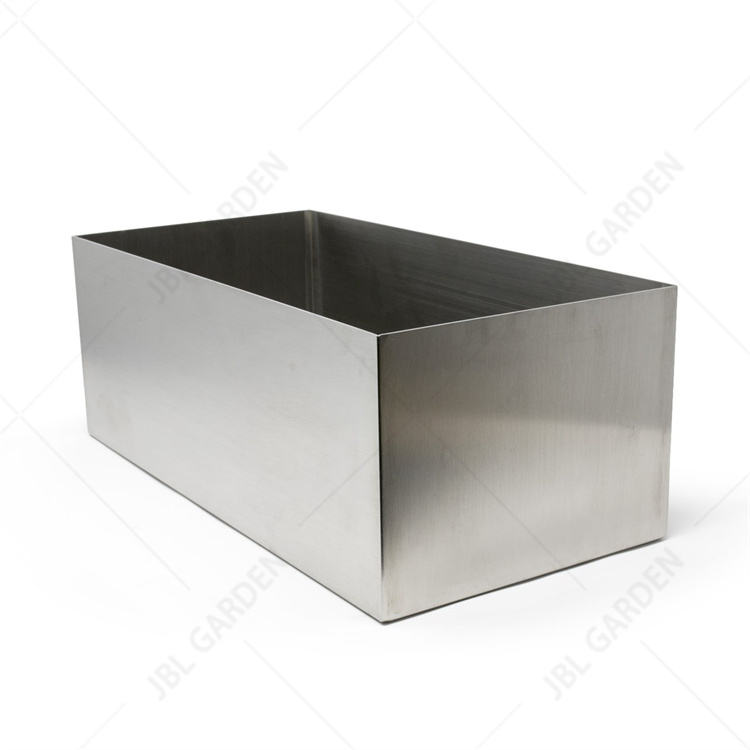
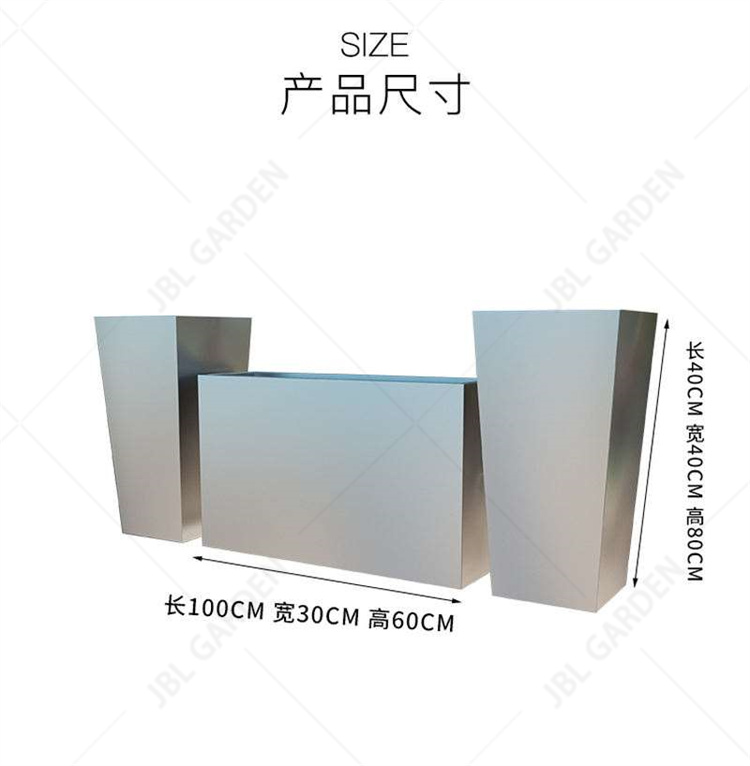

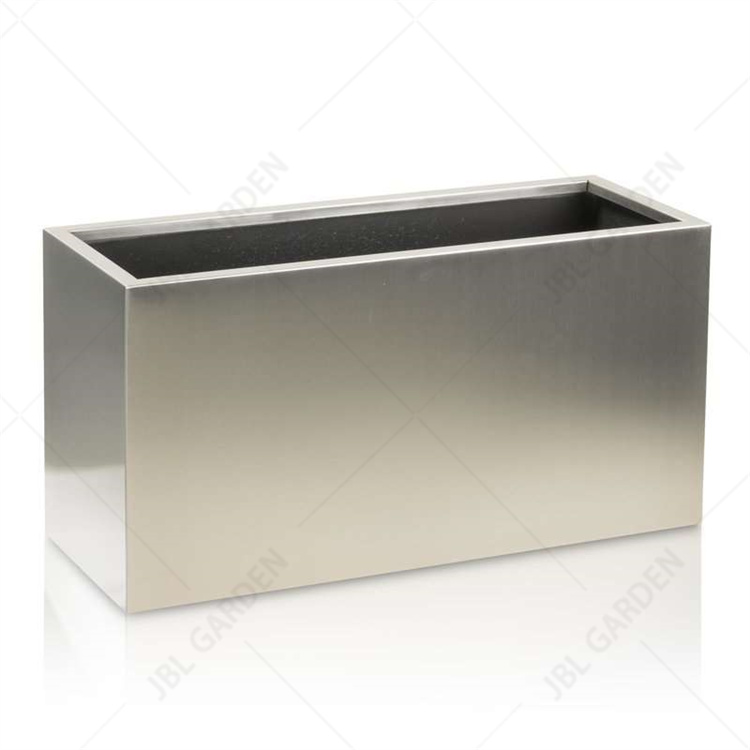
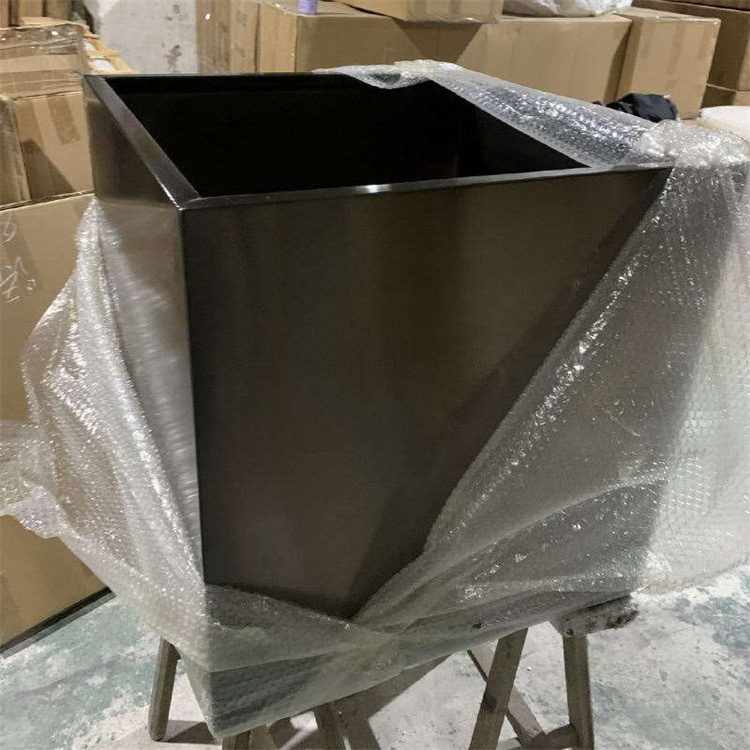

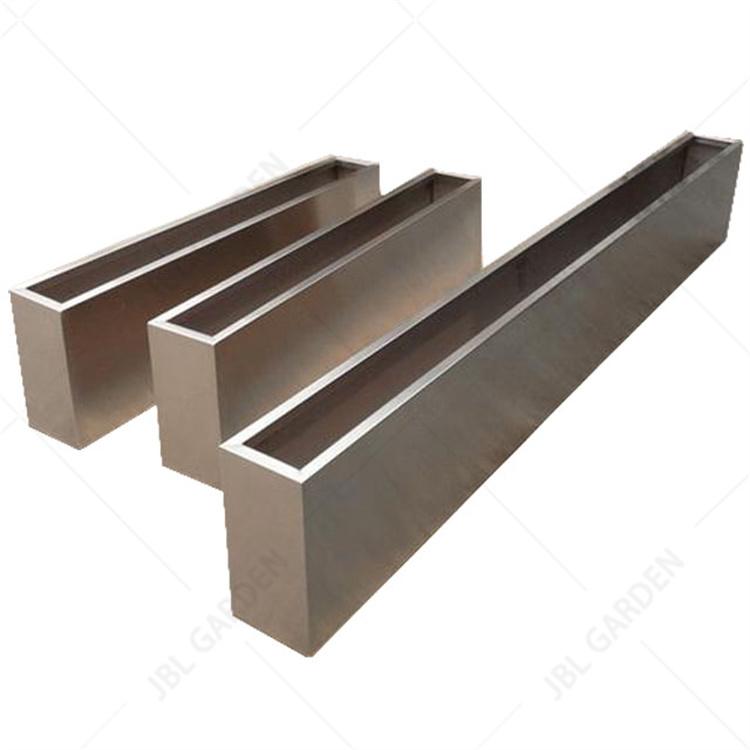
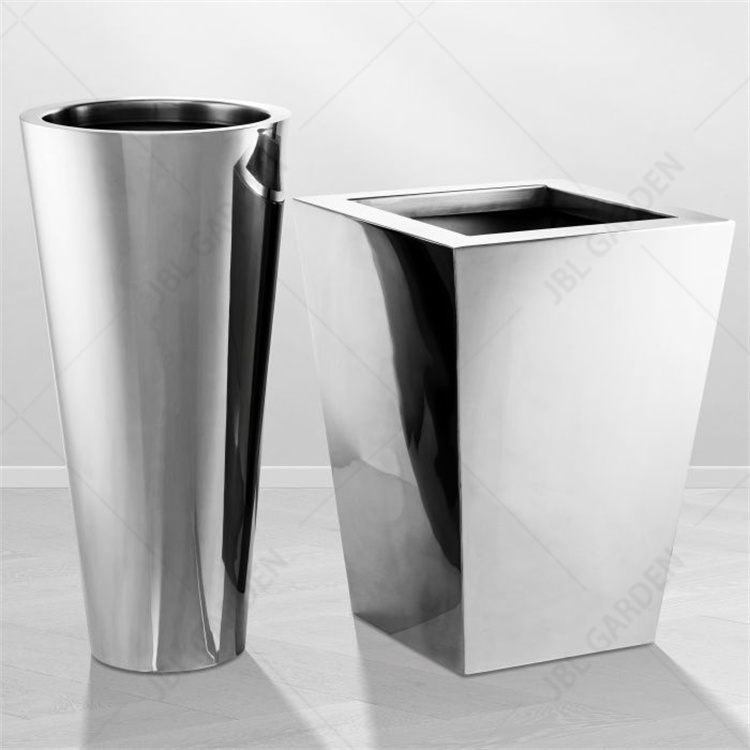


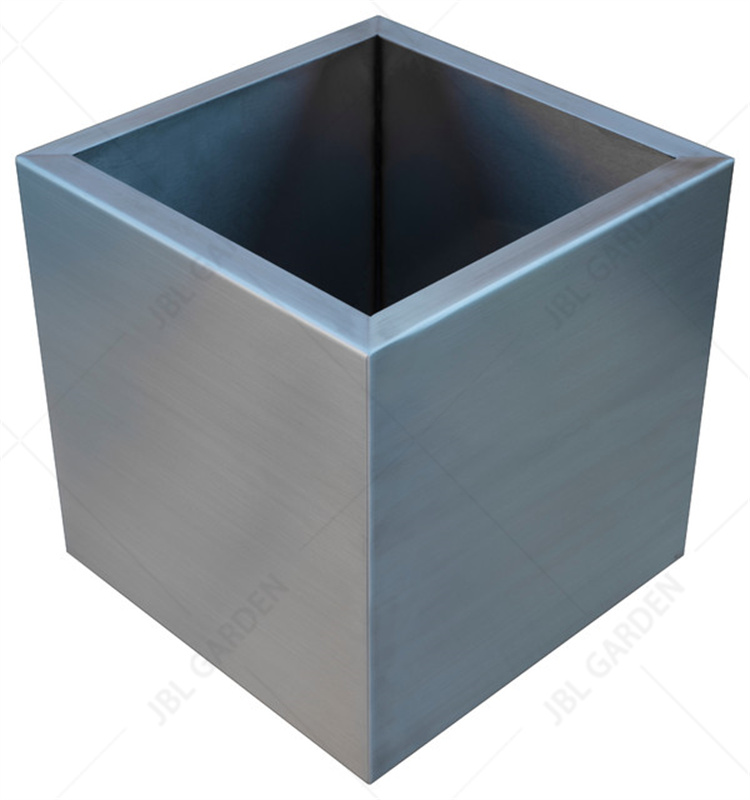

Stainless Steel Flower Planter,Garden Plant Pots,Flower Pot Holder,Metal Plant Pots
Henan Jinbailai Industrial Co.,Ltd , https://www.hnjblbbq.com